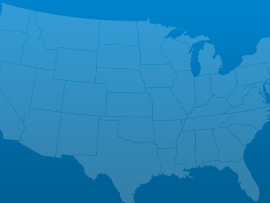Pennsylvania has a total of 3,347 state regulated dams, including 776 high hazard potential dams (23 percent); 289 significant hazard potential dams; and 2,282 low hazard potential dams. High hazard potential dams are those whose failure would cause probable loss of human life and substantial property damage. Of the 776 high hazard potential dams in Pennsylvania, 518 (67 percent) are considered “deficient.” A deficient dam is defined as any dam with a structural or hydraulic deficiency capable of causing the sudden uncontrollable release of reservoir water by partial or complete failure of the dam or any of its features. The estimated cost to repair all Pennsylvania dams projected to be found deficient over the next five years is more than $1.4 billion. Because of the Dam Safety Program, established in the late 1970s, Pennsylvania has remained ahead of most states in dam safety. For Pennsylvania dams, a grade of C- reflects the positive benefits of Pennsylvania’s Dam Safety Program, balanced against the high number of dams in need of repair, the $1.4 billion needed for repair and rehabilitation of deficient high hazard potential dams, and the significant threat a dam failure would pose to public health, safety, property, the environment, and to local, county and state economies.
 Bridges
Bridges Dams
Dams Drinking Water
Drinking Water Energy
Energy Hazardous Waste
Hazardous Waste Inland Waterways
Inland Waterways Levees
Levees Rail
Rail Roads
Roads Solid Waste
Solid Waste Transit
Transit Wastewater
WastewaterA: Exceptional, B: Good, C: Mediocre, D: Poor, F: Failing, ?: Incomplete
Each category was evaluated on the basis of capacity, condition, funding, future need, operation and maintenance, public safety, resilience, and innovation
Aviation
63 public-use airports
Bridges
5,218 of the 22,660 bridges are structurally deficient
Bridges
$429.30 million in bridge funds came from the Federal Highway Bridge Fund in 2011
Dams
96% of the state regulated dams have an Emergency Action Plan
Dams
767 high hazard dams
Drinking Water
$14.2 billion in drinking water infrastructure needs over the next 20 years
Energy
6.577 gigawatt-hours of renewable energy every year, ranking it 17th
Hazardous Waste
96 sites on the National Priorities List
Inland Waterways
260 miles of inland waterways, ranking it 28th nationally
Levees
199 miles of levees
Ports
70.4 million short tons of cargo in 2012, ranking it 11th nationally
Public Parks
$24.5 million of unmet needs for its parks system
Rail
55 freight railroads covering 5,071 miles across the state, ranking 5th nationally by mileage
Roads
15,615 of the state’s 119,846 public roads are major roads, and 15% are in poor condition
Roads
$3.7 billion a year in costs to motorists from driving on roads in need of repair, which is $424 /yr per motorist
Schools
$9.3 billion in estimated school infrastructure funding needs
Transit
450 million annual unlinked passenger trips via transit systems including bus, transit, and commuter trains
Wastewater
$17.9 billion in wastewater infrastructure needs over the next 20 years

March 03, 2017
As the President’s repeated in his address to Congress his pledge to dramatically increase infrastructure spending to the tune of $1 trillion, various Congressional Committees

March 01, 2017
On Tuesday night, President Trump addressed a joint-session of Congress for the first time in his presidency. Infrastructure was among the many issues he discussed.

February 28, 2017
U.S. motorists set a new record for vehicle miles travelled (VMT) in 2016, driving over 3.2 trillion miles, an increase of 70 billion miles from

February 17, 2017
Romantic dates, the Grammy awards and celebrating black history are not the only milestones of this week; the Oroville dam crisis in California and the